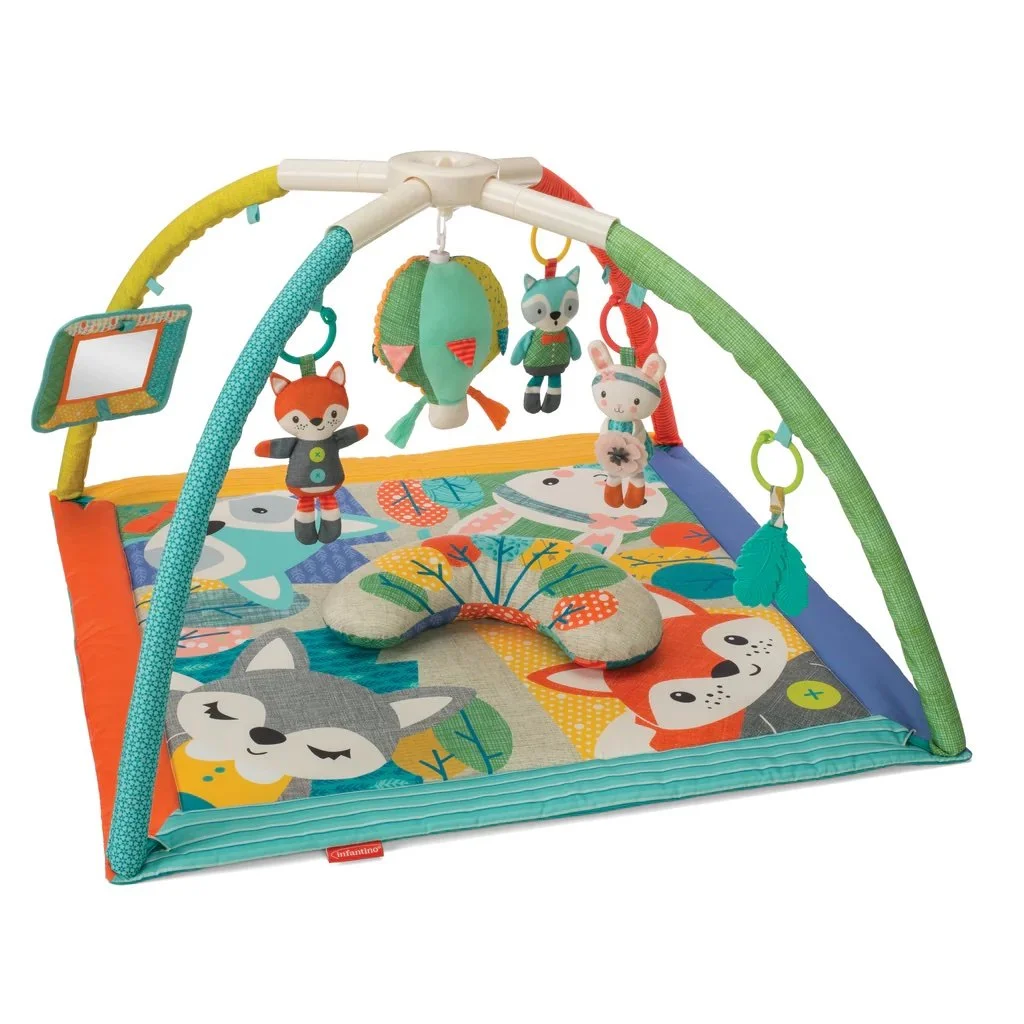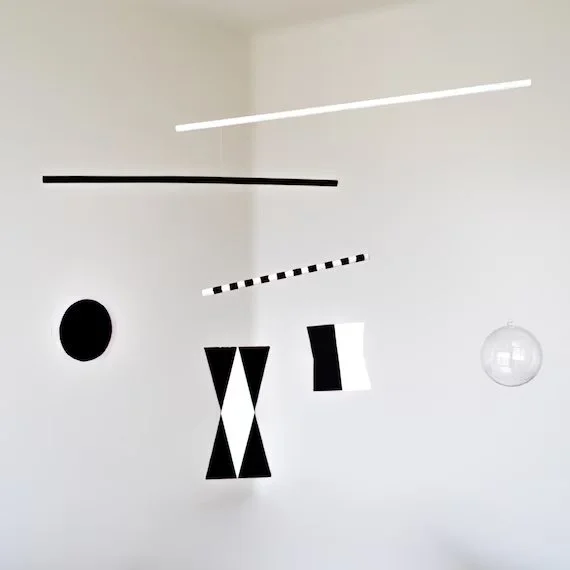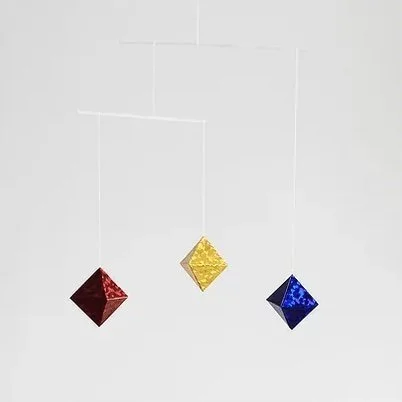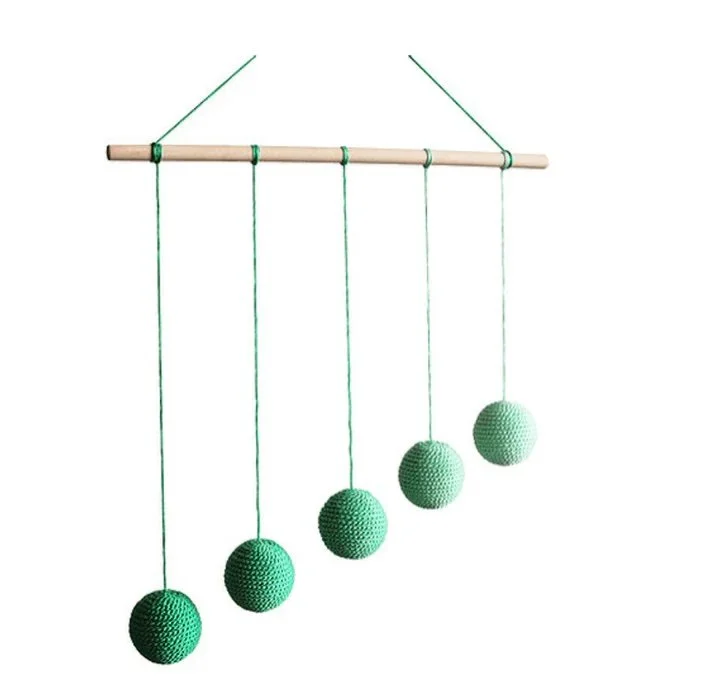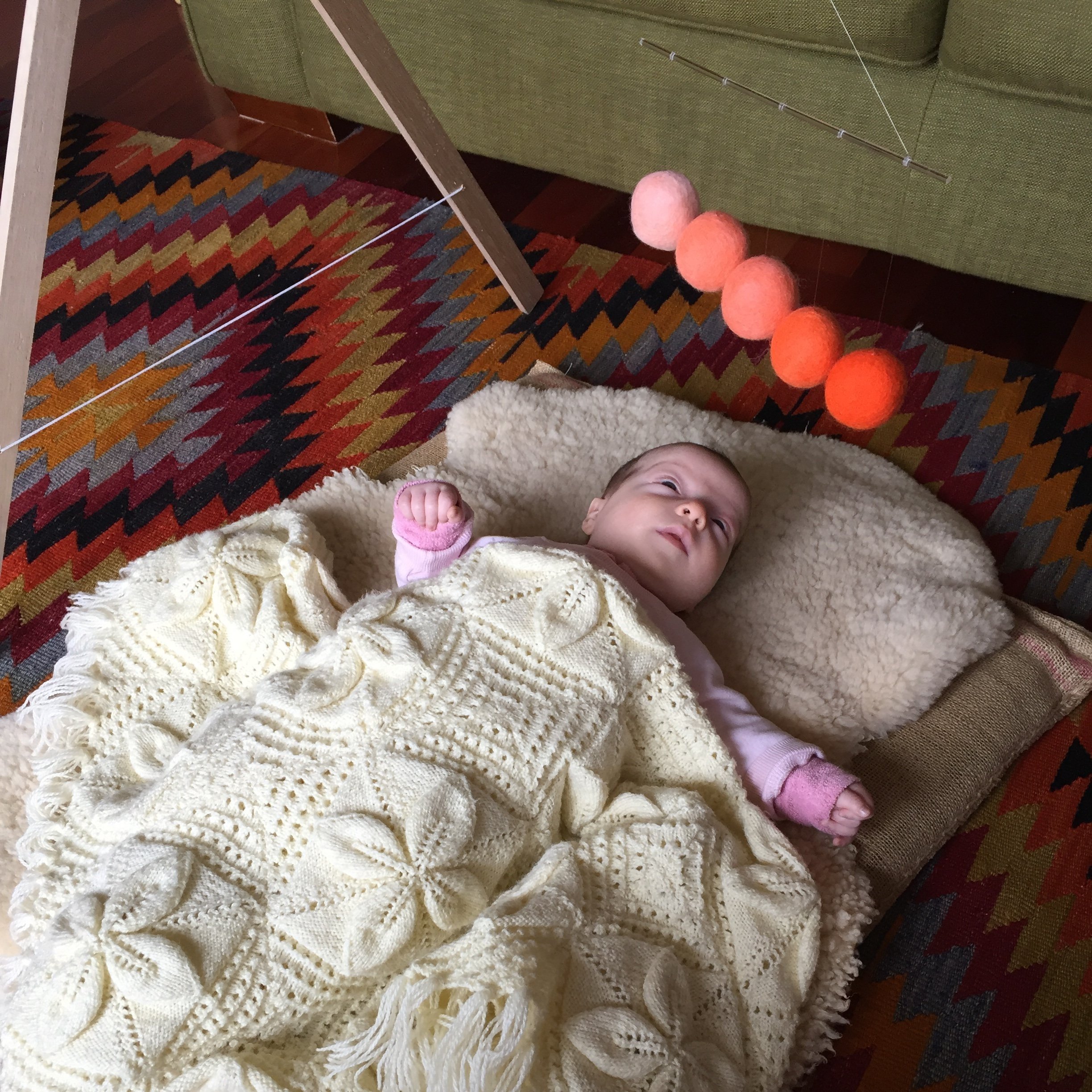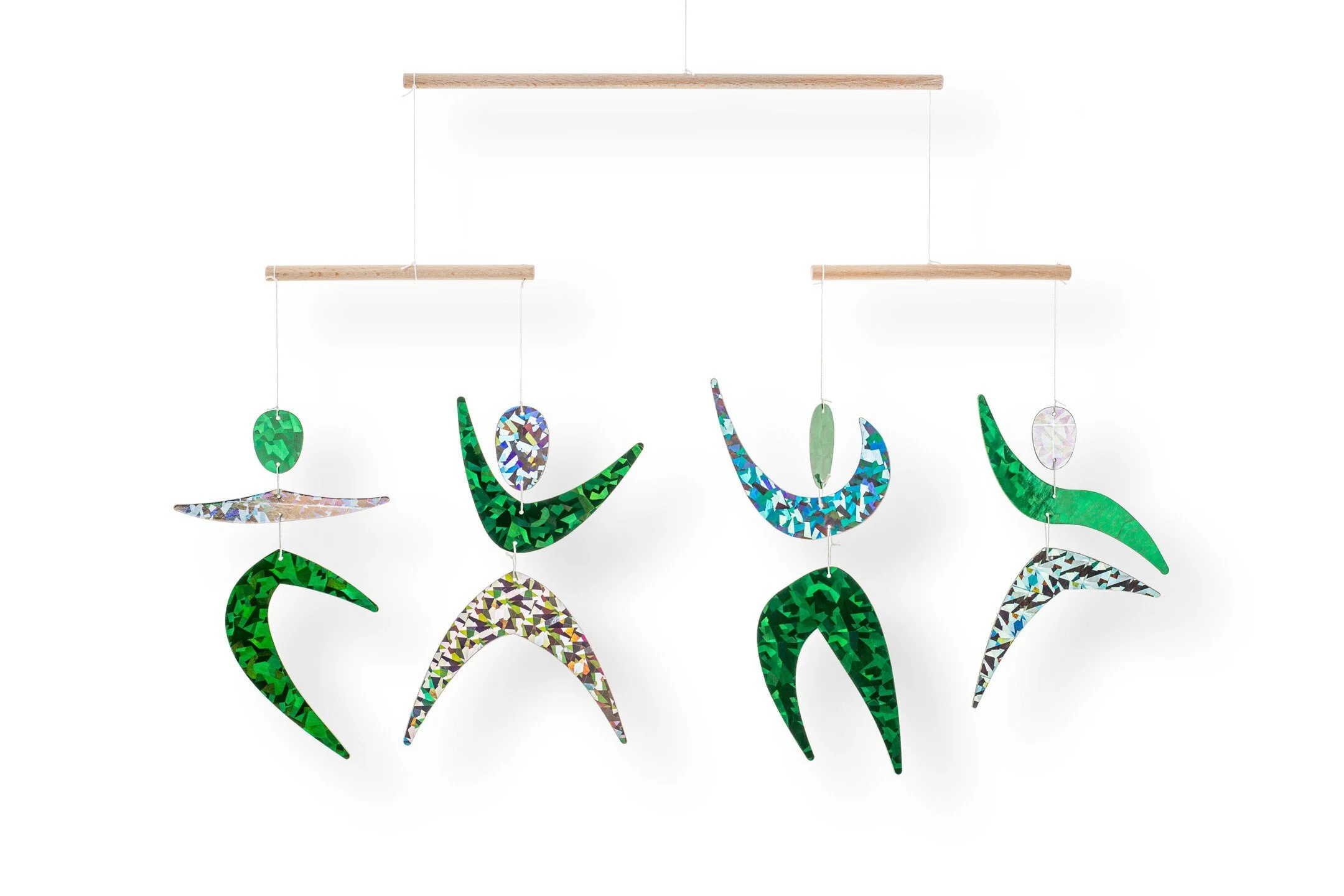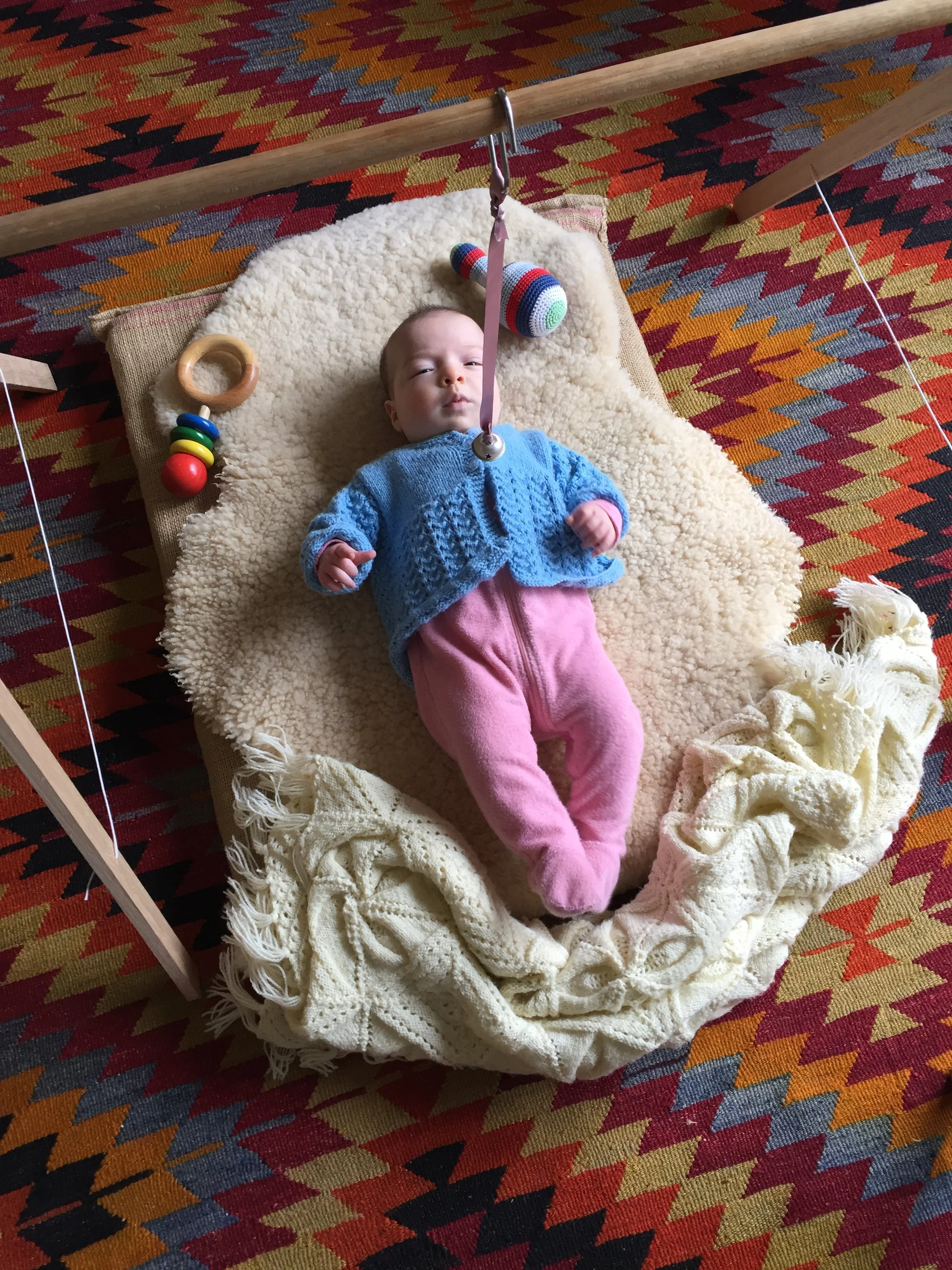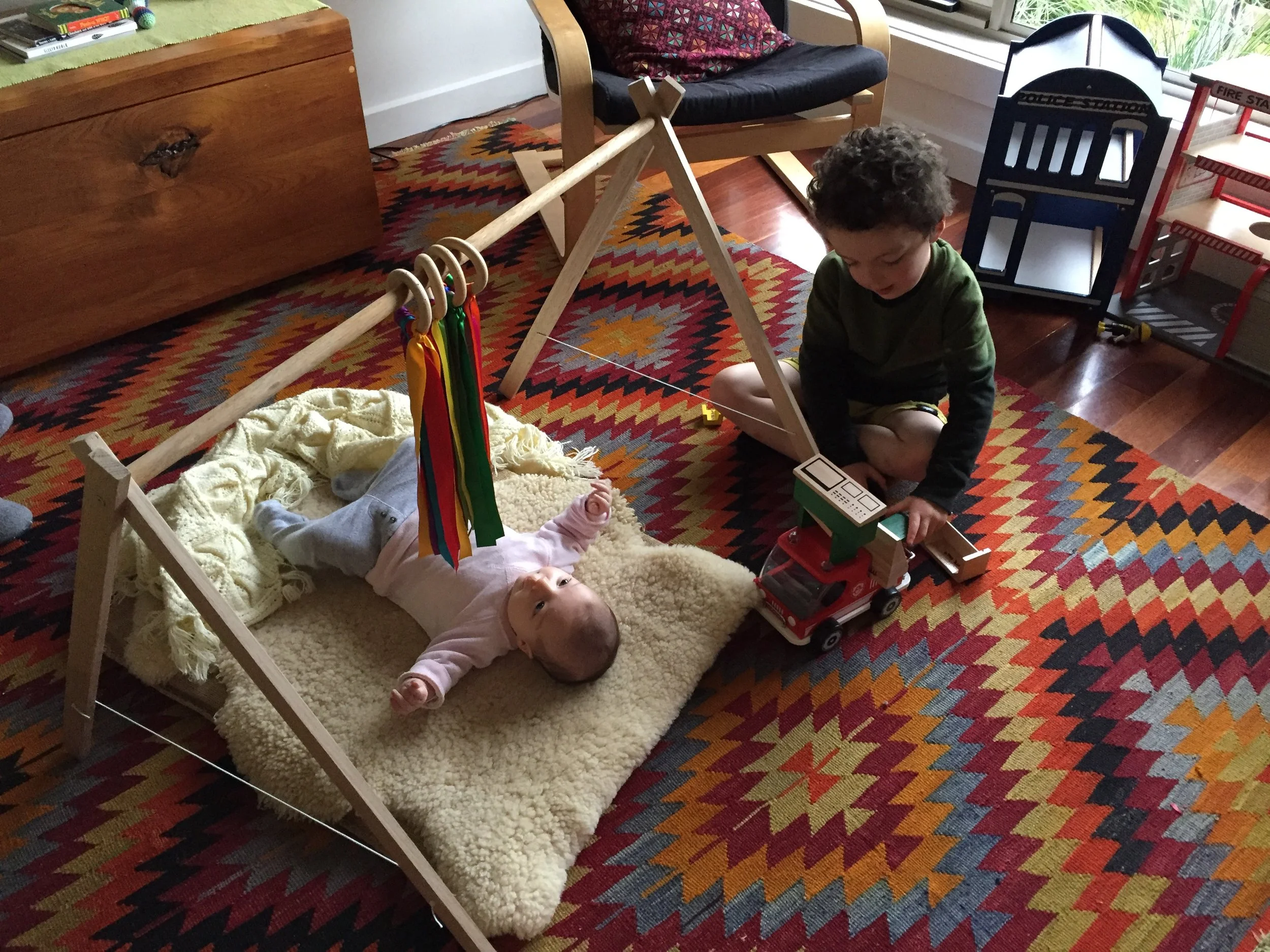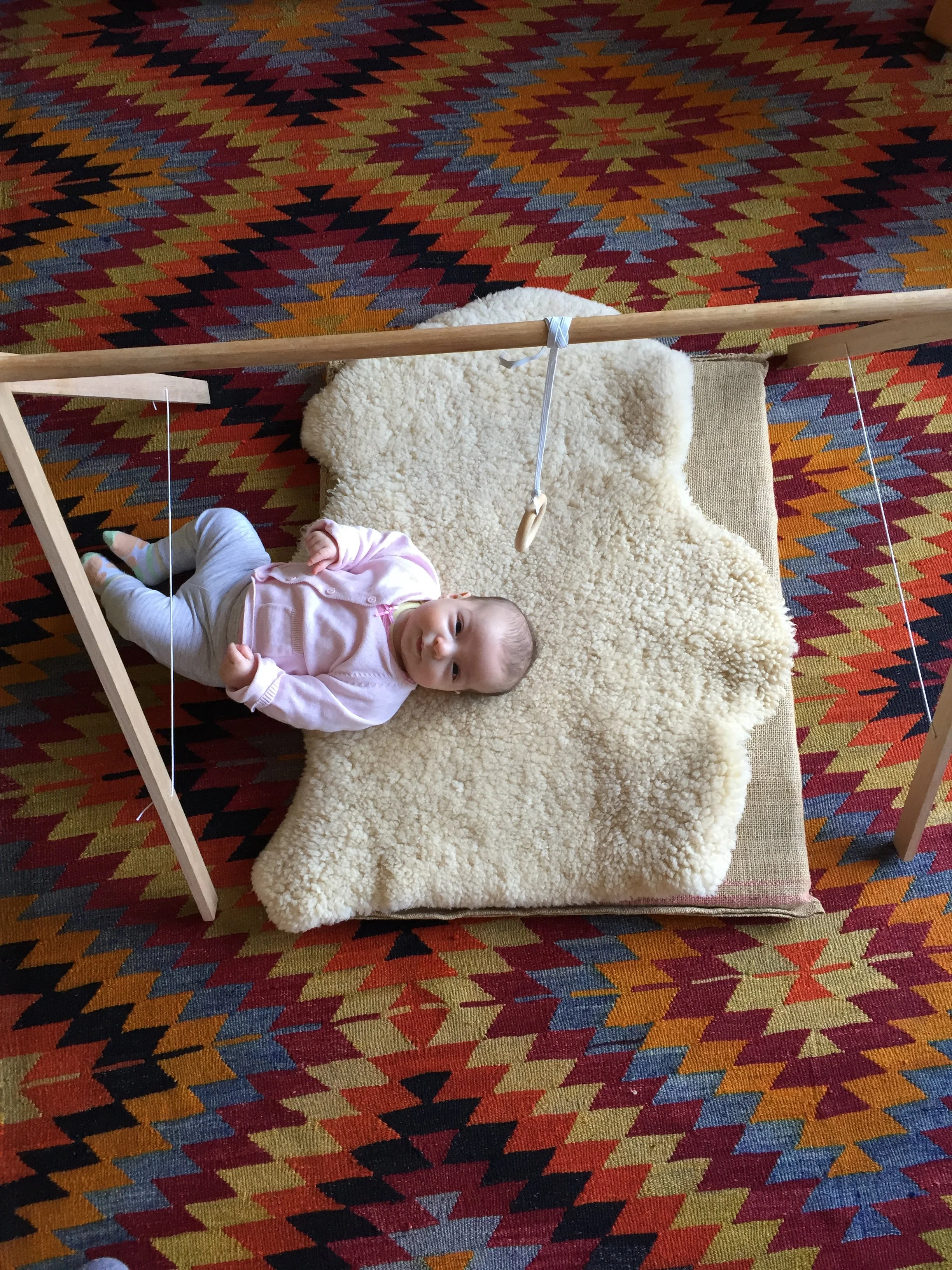Making and using montessori baby mobiles
I have a tendency towards minimalism and try to limit the things that enter my home to either truly useful things or things that I and/or my family really love. Not surprisingly, this means I regularly find myself negotiating my limits as my son brings all sorts of treasures (sticks, stones, empty packaging) home in his pockets that he swears he loves and needs to keep, forever. I suppose this tendency of his confirms my belief that children don’t need many toys, or perhaps they don’t need any at all. If given the chance, they will entertain themselves with the environment around them and whatever they have at hand through rich imaginative play. The less a toy does, the more it stimulates the imagination, and vice versa. Our son Oliver has received plenty of toys as gifts from others in his 6.5 years and has regularly borrowed them from our local toy library but we have only bought him a small number of quality playthings. This is also a reflection of our efforts to be mindful consumers.
When Oliver was born we would lay him on a simple soft blanket and then someone offered to lend us a baby play mat, one of those brightly coloured ones that you often see with objects attached and noisy bits hanging of them. While we were grateful for the gesture and we tried it out, I noticed immediately how overwhelming it seemed to be for him and how out of place he seemed to be on such a bright glaring mat. I knew that newborn babies are only able to focus clearly on black and white objects, so after a little while I put the mat away and laid him back down on his blanket next to some black and white images that I had printed and stuck to a wall next to him with blu tak. It was amazing to watch him really focus on these images and follow them with his eyes as he moved. I was familiar at the time with the Montessori mobile series for newborns but I had left it too late to make them and I couldn’t bring myself to buy them as they are pretty expensive. However, I decided that if I ever had another baby I would make the Montessori newborn mobiles myself for him or her to use.
Nothing against this mat, it’s cute and all, but I was looking for something different.
So, fast forward four years and there I was having finished work four weeks before my second baby’s due date with the idea of resting and gradually making my way through my to-do list. One of the top items was to make the newborn mobiles so I gathered or ordered all of the pieces I needed and got to work. One of the Montessori principles is that the materials (toys/activities) are designed to isolate one skill or concept at a time. This helps the infant concentrate, gives them a clear purpose and avoids overwhelm. While other mobiles are often hung above cribs or in spaces designed for sleep, Montessori mobiles are designed to be used when the child is awake and alert so they can actively focus on and track or grasp the hanging objects and thereby develop their visual sense, and later hand eye coordination. The series of newborn mobiles is divided into the initial visual mobiles for the child to look at followed by a series of tactile mobiles for them to touch as they discover their hands and feet and their ability to bat and grasp objects.
I spent a couple of weeks slowly working on the mobiles, all the while wondering if I would finish in time before my baby arrived. It probably took me a total of about twelve hours, and although it was a bit tedious at times trying to ensure that each piece was balanced correctly, I enjoyed the creative process. I was excited to work so carefully on something that my new baby would be able to enjoy just a short time later and it gave me a sense of satisfaction to feel like I was doing something purposeful whilst waiting for her/his arrival. It’s interesting to reflect on this now as one of the things that I most liked about using the mobiles with her over the following months was similarly the purpose it gave her when I put her down to play/work on the floor. As mentioned above, Montessori materials are designed to help infants engage purposefully with materials that suit their developmental ability and this engagement is referred to as work. Observing my baby engaging in this ‘work’ it was clear how much she enjoyed it.
The following is an overview of the four visual mobiles I made:
1. Munari Mobile
The first mobile in the visual series is black and white and made from two dimensional geometrical shapes. It is understood that newborns cannot see colour so this mobile, which can be introduced any time from two or three weeks old, offers the child the greatest contrast in shades. All the shapes and dowels are balanced off a glass ball which reflects the light. The mobile moves slowly by force of natural air flow which allows the child to track it with great concentration. As the infant studies the mobile, he or she learns that objects are made from linear and curvilinear figures. The Munari mobile was by far the most complicated one to make and achieve the correct balance. We used it with Lana from about three to six weeks old, when we noticed she seemed to be developing an interest in colours.
2. Octahedron Mobile
The second mobile in the newborn series is introduced to the baby when they loose interest in the first one, which usually coincides with them starting to recognise more colours and shades. The Octahedron Mobile is a series of three octahedra in the primary colours of blue, red and yellow. The paper used for this mobile is usually a metallic kind and the result of the light on the moving shapes provides a rich display of new volume and colour to the infant. This mobile was relatively easy to make and Lana enjoyed using it, as can be seen in the image. She used this mobile from about six to ten weeks old, when we introduced the next one.
3. Gobbi Mobile
The third visual mobile in the series introduces colour graduation. The Gobbi Mobile consists of five coloured spheres with intensifying colour depth from light to dark. Designed to be introduced to babies between 7 and 10 weeks old, the Gobbi mobile is said to help the child develop his or her visual abilities and stimulates focus and concentration. It took me several attempts, with different materials, to get this mobile right and while I was making it I remember thinking how I hoped the baby would enjoy it enough to make my efforts worthwhile. However, as it happened, although it was my favourite of the four visual mobiles, Lana seemed a little indifferent about it. She enjoyed watching it for a short time but it didn’t hold her attention for as long as the first two mobiles had. We may have introduced it a little too late, around 10 weeks old, when she had already gotten used to seeing a graduation of colours in her environment. In any case, after a couple of weeks we put it away to move on to the final visual mobile.
4. Dancers Mobile
The forth mobile in the series is the Dancers Mobile which introduces human like figures that appear to be dancing in the air. The figures are made from holographic paper which makes them shine and sparkle in the light while they float and flutter in the breeze. The Dancers mobile offers babies great practice at tracking objects as they practise this skill while watching the figures move slowly up, down and around. This mobile is usually introduced between 10 and 14 weeks old. We used it with Lana from about 12 to 15 weeks old, when she started to show interest in grasping at the dancers, which told us she was ready to experiment with touch.
At this point we put the visual mobiles away and introduced her to the tactile mobiles. Actually the Montessori tactile mobiles are more like simple hanging objects than mobiles in the traditional sense. There are many to choose from and they aren’t necessarily introduced in a specific order but offered to the infant to ‘work’ with, according to their interest. The tactile mobiles are designed to offer the infant an opportunity to experience different sensations of touch, as well as experiment with the cause and effect of batting, grasping or kicking an object and watching it move as a result. As with all Montessori materials, it is important to follow the child’s clue and observe when they show interest and loose interest in any given activity. I didn’t prepare all of the Montessori tactile mobiles, just a handful of variations that I could put together with objects I already had at home. This included a simple bell hanging on a ribbon that she could bat, watch and listen to, colourful ribbons hanging off wooden rings that she could grasp, pull and feel brushing on her skin, a wooden ring hanging on an elastic that she could grasp, pull, release and watch bounce around her, and a fabric Montessori kicking ball that she could bat, grasp, kick and watch.
Once Lana started on the tactile mobiles, we used them daily (interchanging them in no particular order) until she was rolling around and starting to get herself stuck around the frame they hung from, around 5 or 6 months old. Lana was a winter baby so we spent most of her first few months indoors and we got a lot of use out of the Montessori newborn mobiles. Using them quickly became part of our daily routine and I was happy knowing that she had something interesting and purposeful to do whilst I went about my household chores. I’m happy to have these mobiles on hand now to offer clients to use with their own babies during postpartum visits and consultations.
If you enjoyed reading this Blog and would like to see how my crafting and creating has continued, come over to find me on IG @marygiordano.com.au
While I am not a strict follower of the Montessori approach, I do try to incorporate some of the principles into my parenting and home environment. I also like to make toys out of recycled materials based on traditional Montessori activities. Two of the websites I occasionally visit for inspiration for such projects are below. I have no affiliation with either of them.
http://www.thekavanaughreport.com/
https://www.howwemontessori.com/how-we-montessori/
If you’re interested in learning more about Montessori in Australia you can visit https://montessori.org.au/

